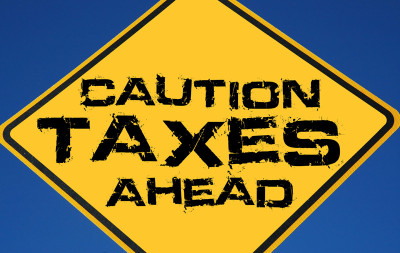State tax rankings loom large in blue state governors’ races

TAXED TO THE MAX: Voters in blue states appear willing to overthrow incumbent leaders in part due to skyrocketing taxes.
By Bruce Parker | Vermont Watchdog
Blue state governors are fighting for their jobs as voters on both sides of the political spectrum appear willing to consider Republican challengers. Newly released state tax rankings may help explain why.
With the midterm election just days away, gubernatorial races in Connecticut, Illinois, Minnesota, Maryland and Massachusetts are in the tight or toss-up category. Perhaps not surprisingly, these states also have some of the highest tax burdens in the nation. Against a backdrop of a struggling national economy, tax-weary constituents may be ready to take out their frustrations on incumbent Democrats.
According to the 2015 State Business Tax Climate Index released Tuesday, Connecticut, Minnesota and Maryland rank in the bottom 11 worst states in the nation when it comes to high taxes.
States at the bottom of the heap are as follows:
50. New Jersey
49. New York
48. California
47. Minnesota
46. Vermont
45. Rhode Island
44. Ohio
43. Wisconsin
42. Connecticut
41. Iowa
40. Maryland
The report, published annually by the nonpartisan Tax Foundation, ranks states according to five tax categories: corporate tax, individual income tax, property tax, sales tax and unemployment insurance tax. Although states such as Illinois and Massachusetts are not in the bottom 11 states overall, they rank low in certain categories, such as property taxes.
In these blue states where gubernatorial races are close, a state’s tax low tax ranking may drive voters to vote against the incumbent leader, or against the majority party.
However, high taxes may also be a looming threat in blue states where incumbent Democratic governors have a more comfortable lead.
In Vermont, where Gov. Peter Shumlin shows a double-digit lead over his Republican challenger, the state’s abysmal No. 46 ranking on tax affordability could narrow the race in the final days before the Nov. 4 election.
While a recent CBS/New York Times poll shows Shumlin up 47 percent to 35 percent over Republican challenger Scott Milne, the governor’s approval rating is hovering down around 45 percent. The same tax-related pressures producing tight races in Connecticut, Illinois and Maryland may also make Shumlin vulnerable — especially among undecided voters.
In the report, Vermont is the 48th worst state on property taxes, the 44th worst state for income taxes, and the 42nd worst state in corporate taxes.
The average property tax paid by Vermonters is $2,197, which eats up about 5.29 percent of personal incomes. By contrast, residents of Alabama and Oklahoma pay and average of $540 and $589, respectively, in property taxes each year, representing just about 1.56 percent of incomes.
Vermont’s individual income tax rate is 8.95 percent. That number places the Green Mountain State in the company of bottom-dwellers Oregon (9.9 percent), Hawaii (11 percent) and California (13.3 percent).
Although Vermont is not among the worst in sales taxes, the state has slipped from a No. 13 ranking in 2012 to a No. 16 rank for 2015.
The various tax components, when taken together, give Vermont one of the worst business tax climates in the country. It’s a fiscal reality that contributes to Shumlin’s low approval ratings.
A tax not mentioned in the report but certain to appear in future years is the tax for single-payer. While not cited in the report, Vermont’s looming switch to single payer health care — estimated at as much as $2.2 billion — could require astronomical taxes such as a 13 percent payroll tax or a sales tax above 25 percent.
Shumlin has chosen not to announce such tax proposals for single-payer health care until after the election.
Contact Bruce Parker at bparker@watchdog.org







